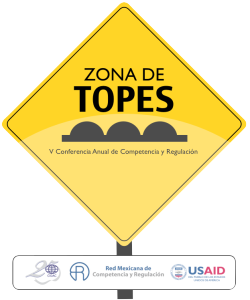A Mexican Oddysey
The van slowed and lurched as we drove over a hump in the road, a ‘Tope’ as we call them here in Mexico. This was perhaps the 800th Tope we’d encountered on the road from Huatulco on the West Coast to Pueblo, near Mexico city, and we’d only been driving for 20 minutes.
Near relatives of the Mexican Tope have been observed in various other parts of the world but they have little in common. Australians have imaginatively dubbed them ’speed bumps’ but the British prefer to anthropomorphize them, calling them ‘silent policemen’. Like human British police officers the ‘silent policemen’ do not carry weapons and are generally very polite and helpful. They are accompanied by clearly visible warning signs, come in standard sizes, are located in reasonable positions, usually to protect pedestrians and children, and are navigable without damage to the undercarriage of your car. Just to be clear, I’m talking about the silent policemen here, not the human variety.
Mexican Topes are an entirely different matter. They vary greatly in size, color, patterning, visibility, signage, sanity of location and level of aggressiveness. The milder specimens, beaten into submission through years of combat with automobile suspension systems, may inflict little more than an invigorating lurch. The younger, more vital Topes, on the other hand, delight in scratching out the innards of your vehicle and can maim a truck at fifty paces. They should be approached with extreme caution from an oblique angle. This keeps your undercarriage higher off the ground and confuses the Tope so that it only attacks one wheel of your vehicle at a time, maximizing your chances of survival.
It is not always easy to spot a Tope before it is too late. Signs, where present, are inconsistent and obscure. Yellow warning stripes are seldom refreshed and quickly adopt the color of their surroundings. The Tope is a master of disguise, concealing its alert sign behind bushes, lurking in the shadows of trees in the hope that an unwary driver will hit it at high speed and it will score yet another ‘kill.’
Topes were originally released into the wild in a misguided effort to curb the rashness of the epidemic numbers of wild and reckless Mexican drivers. But as is often the case when alien species are introduced to try to correct an imbalance in the eco-system, this experiment went sadly awry. Inevitably some Topes escaped and went feral. Since then they have propagated throughout the highway system and forcing the native traffic lights into retreat and replacing them across most of the country.
Evolutionary Advantages of the Mexican Tope over its native competitor, the Regular Mexican Traffic Signal
1.Topes cannot be easily ignored. Traffic lights less so. The average Mexican driver affords them the authority of Christmas decorations.
2.Topes have no moving parts so they are easy to repair and extremely hard to kill. Traffic lights are weak. The can be shot at and easily toppled with the aid of lassos and horses.
As a result, the considerably prettier native species is now on the endangered species list.
From what noisome cave did this aggressive beast emerge in the first place? None other than fabled Atlantis, according to some scientists. Where, they postulate, the ancestor of the deadly Tope was created through genetic meddling, along with other dangerous beasts such as the griffin and the minotaur. But the Tope, unlike its mythological cousins, quietly survived, awaiting its moment whilst evolving into a more terrible form. Finally, after millennia, came the opportunity to occupy this unique ecological niche in the center of Mexican roadway. Once introduced the Tope quickly rose the top of the food chain and came to dominate one of the most challenging environments in the world.
A master of survival the Tope has developed a symbiotic relationship with its prey. A close examination of the immediate surroundings of any particularly large and savage specimen will reveal the presence of a muffler repair shop along with various other thriving vehicle maintenance services, motels, restaurants, sometimes even a hospital. Economists now believe that the much reviled Tope could end up providing the solution for the flagging Mexican economy.
Economists are not the only ones speaking out in the Tope’s favor. Naturopathic mechanics are hailing assault by Tope as the new radical detox solution for Mexican cars. They believe that the Tope scrapes dangerous parasites from the underside of your vehicle, removing toxins and forcing micro-nutrients into the cooling system. Research indicates that this in fact increases longevity of the average Mexican car by up to twenty percent. Doubters claim that these studies were funded by Tope owned corporations, and the jury is still out.
So is the ubiquitous Tope friend or foe to man? Time alone will tell.
To learn more about the Mexican highway ecosystem, read part two of my report titled: The Mexican Dog.

